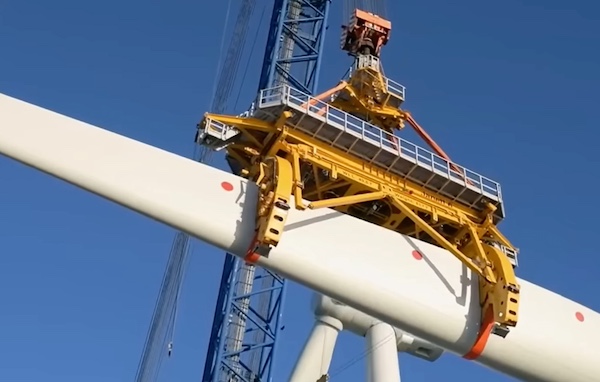
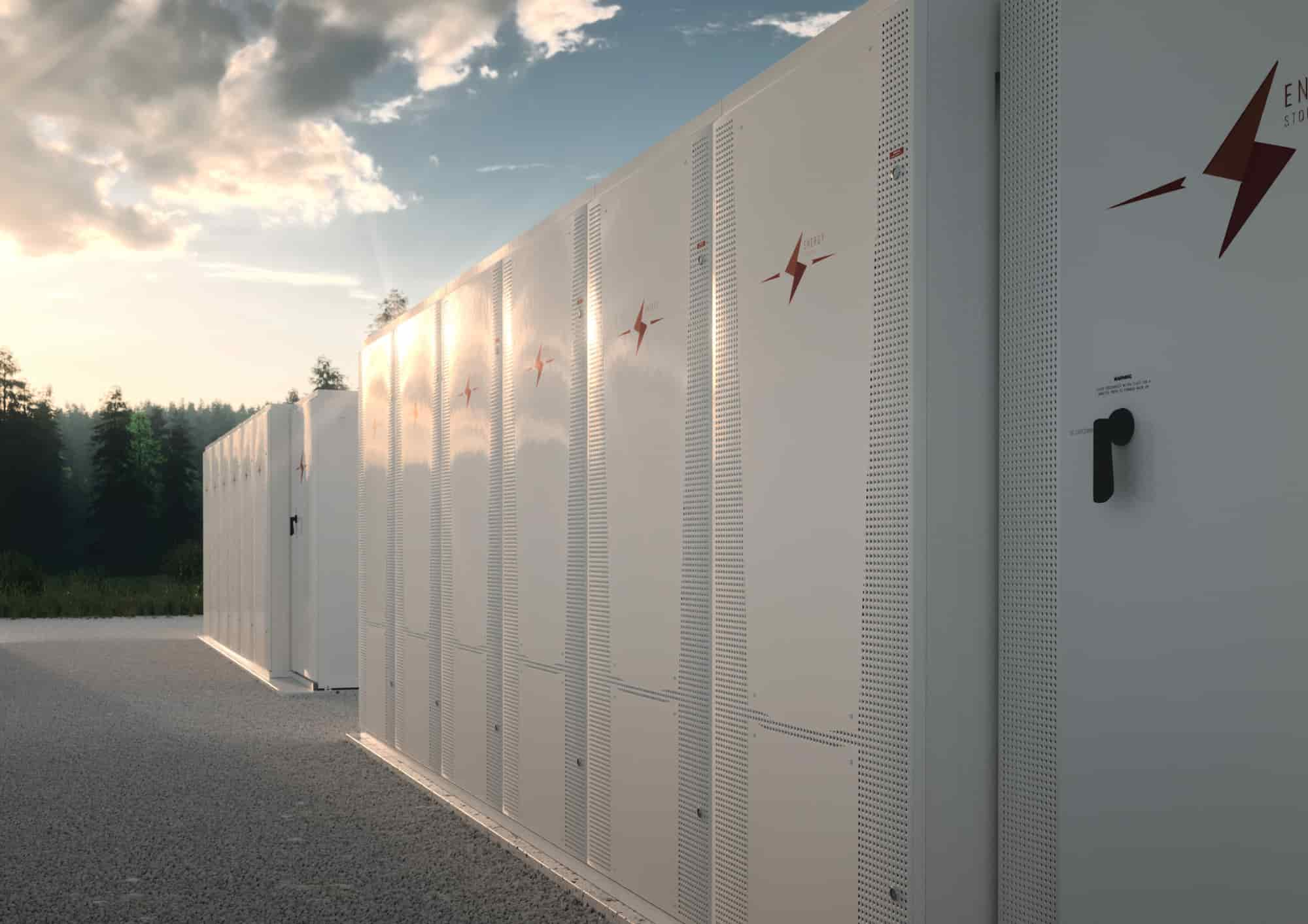
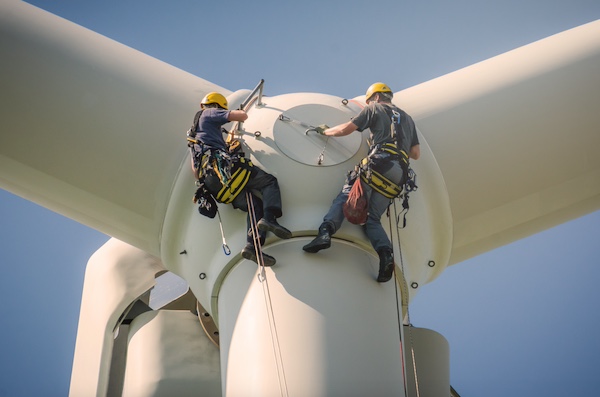

The Zero Emission Transportation Association’s Executive Director Albert Gore issued the following statement in response to the publication of the final rules for the New Clean Vehicle Tax Credit (§30D) by the U.S. Department of Treasury and the Department of Energy.
“The Administration has finalized rules that, along with the escalating battery and mineral content sourcing requirements in the clean vehicle credit, is rightly oriented around strengthening our control of battery and mineral supply chains and creating jobs across the United States. The stringency of the final rules are consistent with law and appropriately balances those goals.
“With more than $173 billion invested in the domestic EV and battery supply chain since the beginning of 2021, these rules will ensure that more vehicles on the road here will be made here, and more Americans will have access to electric vehicles. We will continue to work with all stakeholders to ensure the United States can succeed in outcompeting China as the global leader in advanced manufacturing.
“ZETA thanks Treasury and DOE for engaging with industry robustly throughout this process. By finalizing these rules, the agencies are providing businesses with the regulatory certainty needed to continue investing in a competitive domestic supply chain.
“At the end of the day, electric vehicles continue to be one of the best transportation options for American drivers, offering reduced total cost of ownership, an improved driving experience, and zero tailpipe emissions. The rules finalized today will help ensure that those vehicles continue to be built in America.”
Zero Emission Transportation Association | https://www.zeta2030.org/

Intelligent power management company Eaton participated in The White House Office of the National Cyber Director’s Convening on Cyber Workforce event on April 29 to underscore its commitment to cybersecurity training across industries. The company’s vice president of engineering and technology, Luiz Fernando Huet de Bacellar participated in the roundtable discussion with U.S. business, government and community leaders.
The need for cybersecurity professionals is projected to grow by 32% by 2032 and Eaton’s multipronged efforts are strengthening the talent pipeline for the cybersecurity workforce. With more than 27,000 employees in the U.S., Eaton provides in-depth cybersecurity education for its workforce across all levels of its business to help customers build safer, more cybersecure electrical networks. Further, Eaton is expanding its U.S manufacturing and providing cybersecurity training for new employees; the company announced more than $200 million in manufacturing investments and the addition of over 800 jobs in Texas and Wisconsin in 2023. Long running Eaton collaborations with leading universities and industry organizations are attracting and preparing the next generation of cybersecurity professionals.
“As digital threats continue to evolve and proliferate, and critical systems become more connected and digitalized, more skilled cybersecurity professionals are needed across every industry and sector,” said Luiz Fernando Huet de Bacellar, PhD, Eaton’s vice president, engineering and technology. “At Eaton, we believe developing cybersecurity professionals is essential to ensure a safe and secure future. We’re taking steps within and outside of our organization to instill cybersecurity education at every level to create trusted environments."
The company contributed over $1 million to provide real-world cybersecurity experience for students at the Eaton Cybersecurity SAFE (Security Assessment and Forensic Examination) Lab at Rochester Institute of Technology (RIT) and will invest more than $500,000 over the next three years to facilitate ongoing education and training at RIT’s ESL Global Cybersecurity Institute.
Eaton also collaborates with Carnegie Mellon University (CMU) to advance cybersecurity education and research. As a Partner Member of CMU's CyLab Security and Privacy Institute, Eaton has contributed over $460,000 to support collaborative cybersecurity research and education.
Eaton's Product Cybersecurity Center of Excellence and secure-by-design philosophy ensure that its products meet rigorous cybersecurity and safety design standards. Over 95% of its product development teams have participated in cybersecurity training. The company's cybersecurity experts integrate cybersecurity processes and a secure development lifecycle into every stage of product development.
Further, Eaton works closely with industry organizations such as the National Electrical Manufacturers Association (NEMA), the U.S. Cybersecurity and Infrastructure Security Agency (CISA), Microsoft, TechAccord, UL, the International Society of Automation (ISA) Global Cybersecurity Alliance (ISAGCA) and others to drive the development and adoption of global cybersecurity standards and technology breakthroughs.
The company’s Cybersecurity Perspectives virtual learning forum has brought together more than 5,000 registered attendees with experts from around the world for nearly five years to advance a more cybersecure future. To learn more, visit Eaton.com/cybersecurity.
Eaton | https://www.eaton.com/us/en-us

 Kiterocket, a PR-forward communications agency for transformative, high growth companies, announced it has tapped Jessica Fishman as Director for its Renewable Energy Practice. As the climate tech sector experiences exponential growth, Fishman will lead the agency’s renewable energy client portfolio and continue its proven track record of advancing brands advancing the world.
Kiterocket, a PR-forward communications agency for transformative, high growth companies, announced it has tapped Jessica Fishman as Director for its Renewable Energy Practice. As the climate tech sector experiences exponential growth, Fishman will lead the agency’s renewable energy client portfolio and continue its proven track record of advancing brands advancing the world.
"We work with companies and industries leading some of the biggest way-of-life transformations—a critical aspect of that is new energy solutions, and this is a growth sector for the agency as we help clients be at the forefront of critical conversations," said Kiterocket CEO Amanda Foley. “Jessica brings deep technical knowledge and broad marketing experience in renewables to our team. Just as important as her professional track record is her personal dedication; she is an expert that truly walks the walk when it comes to her climate commitment."
Fishman brings 20 years of experience as a strategic marketing leader, including a decade of renewable energy expertise to Kiterocket. Prior to joining Kiterocket, she worked at leading clean energy companies including Conergy and AlsoEnergy where she led marketing and communications departments. Fishman also spent nearly seven years as head of global public and media relations at SolarEdge where she built a highly effective and efficient public and media relations department during a high-growth period, which included three acquisitions and an IPO. The company ultimately emerged as an industry thought leader with a multi-billion-dollar valuation.
"Kiterocket is committed to representing brands that care about a sustainable future and representing leaders in the global energy transition," said Fishman. "I am excited to join the team and contribute my experience and knowledge to support the agency’s current and future clients and raise awareness for how their technology is helping the world achieve critical climate goals."
Kiterocket | www.kiterocket.com
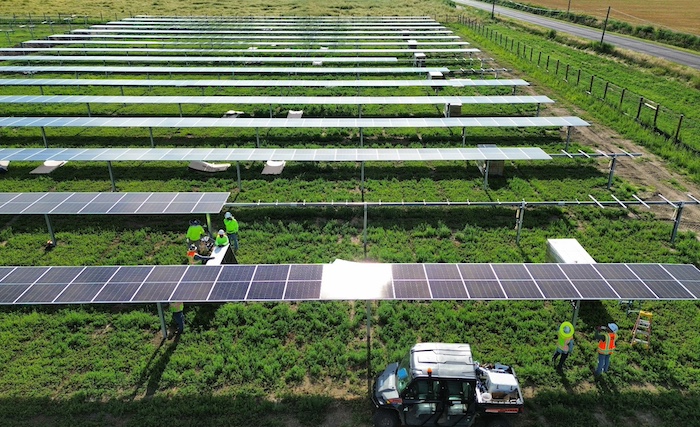
Chaberton Energy, a Maryland-based solar developer, and Pivot Energy, a national renewable energy owner and operator, announced that they are powering up an innovative solar project in Maryland. The 19-acre site, named Project Catherine, sits on St. Mary Coptic Orthodox Church's property in Cooksville, Howard County, Md., and is essentially three projects in one. A portion of the project supplies energy directly to the church. While the rest of the project serves Loyola University Maryland and the surrounding community via a subscription model.
The project involved significant input from the community, St. Mary Coptic Orthodox Church, and the project subscribers. For instance, by limiting the footprint of the solar arrays to unused portions of the existing site, project designers retained prime athletic fields for the church. The solar land lease payments will also benefit the St. Mary community.
"Pivot Energy shares our passion for the energy transition and works tirelessly to help communities access local, affordable, clean energy," said Mike Doniger, chief operating officer at Chaberton Energy. "This project showcases our development team's creativity as it combines three different solar business models in one project—a community solar project, a power purchase agreement with a nonprofit, and the offsetting of on-site electricity usage. We are grateful to St. Mary Church, Howard County officials, Loyola and so many others who collaborated to make this a reality."
The sites were originally developed by Chaberton and recently acquired by Pivot, adding to their significant portfolio of active project sites in the mid-Atlantic.
Project Catherine will provide a total of 4.3 megawatts of direct current (MWdc), enough to power the equivalent of 750 homes. Community solar subscribers will have access to 3.4 MWdc of capacity via the Maryland Community Solar program. Loyola will have access to 750 kilowatts of direct current (kWdc) under a renewable energy purchase agreement via the Maryland Aggregate Net Energy Metering program, and the balance will be used to offset the church's on-site load.
"Project Catherine helps leading institutions within the community gain access to clean, affordable, local energy," said Brit Gibson, chief operating officer at Pivot Energy. "Our partnership with Chaberton and the willingness of St. Mary Church and Loyola University of Maryland to think outside the box made it possible to build this unique solar project."
True to both Pivot Energy's and Chaberton Energy's values and business strategies, Catherine Community Solar will benefit local communities in ways that go beyond providing access to savings on clean energy.
Pivot donated to the Power52 Foundation, a workforce development organization that helps at-risk individuals from the Baltimore area by providing training, mentoring and job placement assistance for careers in clean energy. Chaberton donated money to Bright Minds Foundation, a community group that supports Howard County public education, and the Community Ecology Institute, a Columbia, Md., nonprofit that cultivates communities where people and nature thrive together.
Project Catherine and additional solar projects in the Pivot-Chaberton portfolio will bring clean energy and savings to thousands of households and help make a dent in Maryland's goal of reaching 50% renewable energy production by 2030.
Pivot Energy | pivotenergy.net
Chaberton Energy | https://www.chaberton.com/
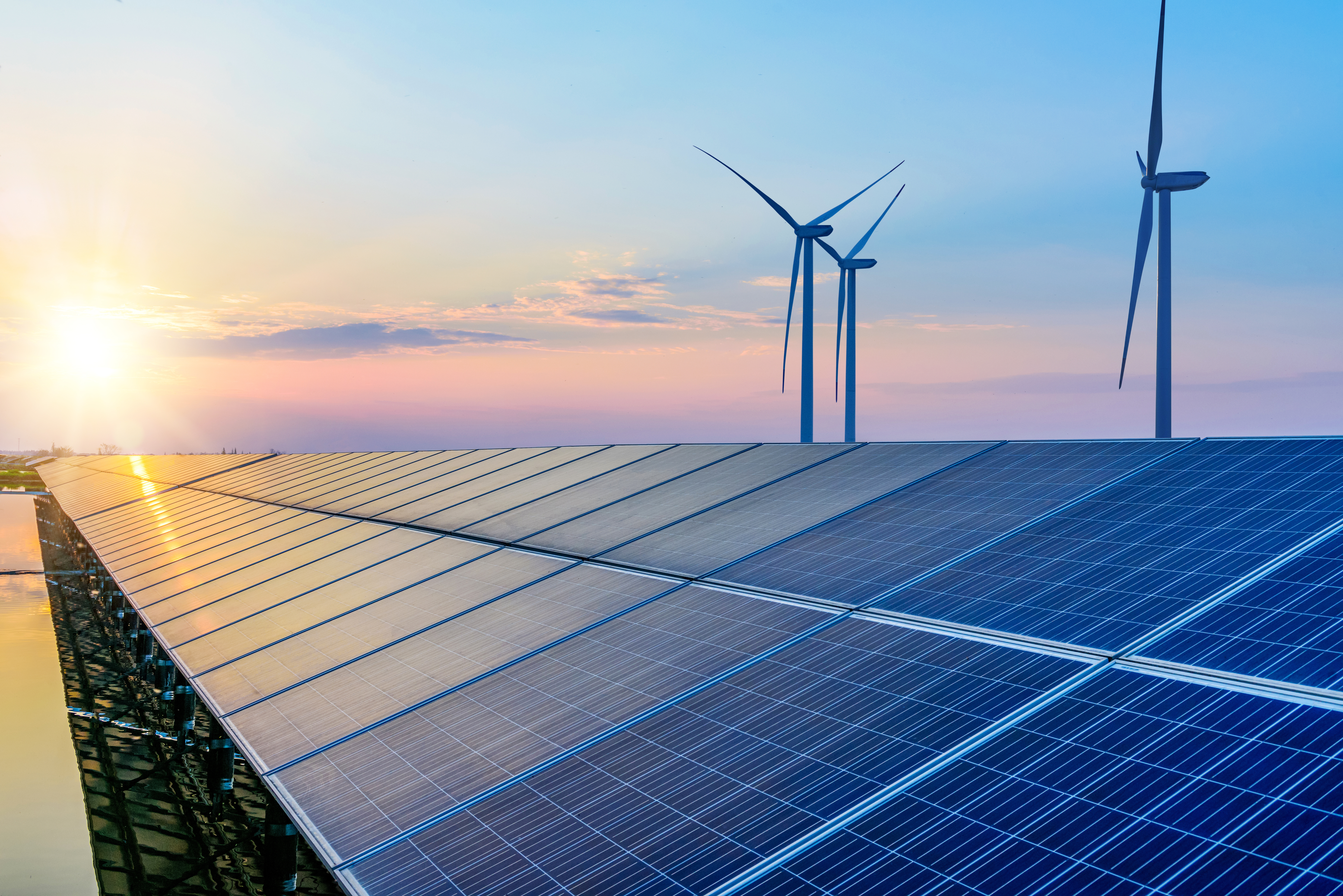
T.R. Ludwig, CEO of Brooklyn SolarWorks and treasurer for New York State’s Solar Energy Industry Association (NYSEIA), was recognized for his contributions to New York State’s transition to renewable energy at City & State’s inaugural Trailblazers: Clean Energy Awards ceremony.

Ludwig was recognized for his commitment to making renewable energy accessible for New York City residents, both technically and financially.
T.R. is a key advocate and advisor for policies that support the development of solar in New York City. Notably, T.R. worked alongside New York City’s mayor, Eric Adams, tailoring his City of Yes Carbon Neutrality amendments to relax restrictive zoning regulations that have historically impeded the installation of solar.
In addition, Brooklyn SolarWorks was commended for their patented solar canopy, which is specifically designed to maximize system sizes throughout New York City and other urban environments, by optimizing solar development on flat roofs and parking lots.
City & State’s Trailblazers: Clean Energy Awards highlight a cross-section of leaders at the forefront of the clean energy transition, operating in a variety of fields including renewable energy, finance, engineering, and education
Brooklyn SolarWorks | https://brooklynsolarworks.com/
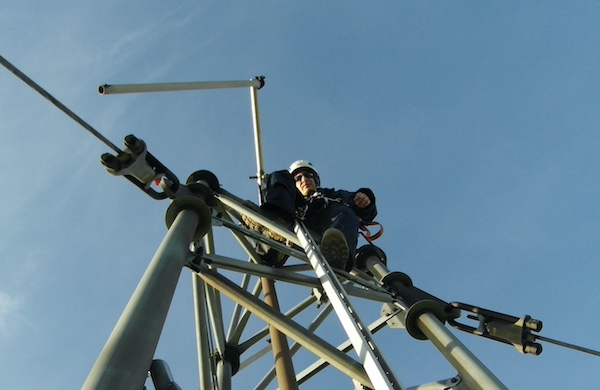

The U.S. Department of Energy (DOE) Solar Energy Technologies Office (SETO) announced the 10 teams selected to advance to the final phase of the multi-million dollar American-Made Solar Prize Round 7. The finalists will each receive $100,000 in cash and compete in the next stage of the competition. Three of the finalists also split a $50,000 bonus cash prize for winning the Justice, Equity, Diversity, and Inclusion (JEDI) Contest, which encourages solutions that enable underserved communities to overcome systemic barriers to solar deployment.
The Solar Prize Round 7 finalists are:
In the coming months, finalists will bring their concepts closer to commercialization and present their innovations at the Go! Demo Day at the RE+ conference in September 2024. Two teams will then be named grand prize winners, each earning $500,000 in cash and additional support vouchers. Select teams may also be awarded additional funds through their participation in the JEDI contest.
Learn more about the American-Made Solar Prize.
Solar Energy Technologies Office | energy.gov/eere
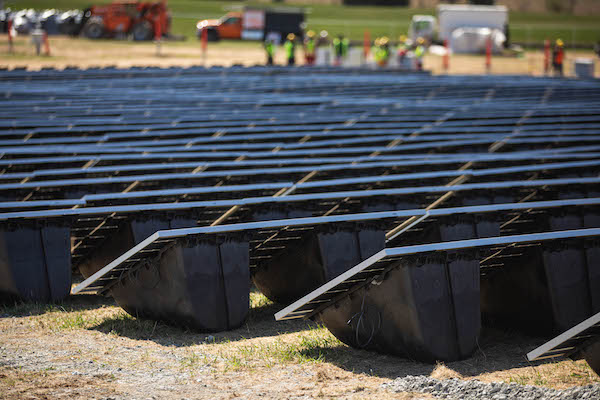
Alternative Energies May 15, 2023
The United States is slow to anger, but relentlessly seeks victory once it enters a struggle, throwing all its resources into the conflict. “When we go to war, we should have a purpose that our people understand and support,” as former Secretary ....

Unleashing trillions of dollars for a resilient energy future is within our grasp — if we can successfully navigate investment risk and project uncertainties.
The money is there — so where are the projects?
A cleaner and more secure energy future will depend on tapping trillions of dollars of capital. The need to mobilize money and markets to enable the energy transition was one of the key findings of one of the largest studies ever conducted among the global energy sector C-suite. This will mean finding ways to reduce the barriers and uncertainties that prevent money from flowing into the projects and technologies that will transform the energy system. It will also mean fostering greater collaboration and alignment among key players in the energy space.
 Interestingly, the study found that insufficient access to finance was not considered the primary cause of the current global energy crisis. In fact, capital was seen to be available — but not being unlocked. Why is that? The answer lies in the differing risk profiles of energy transition investments around the world. These risks manifest in multiple ways, including uncertainties relating to project planning, public education, stakeholder engagement, permitting, approvals, policy at national and local levels, funding and incentives, technology availability, and supply chains.
Interestingly, the study found that insufficient access to finance was not considered the primary cause of the current global energy crisis. In fact, capital was seen to be available — but not being unlocked. Why is that? The answer lies in the differing risk profiles of energy transition investments around the world. These risks manifest in multiple ways, including uncertainties relating to project planning, public education, stakeholder engagement, permitting, approvals, policy at national and local levels, funding and incentives, technology availability, and supply chains.
These risks need to be addressed to create more appealing investment opportunities for both public and private sector funders. This will require smart policy and regulatory frameworks that drive returns from long-term investment into energy infrastructure. It will also require investors to recognize that resilient energy infrastructure is more than an ESG play — it is a smart investment in the context of doing business in the 21st century.
Make de-risking investment profiles a number one priority
According to the study, 80 percent of respondents believe the lack of capital being deployed to accelerate the transition is the primary barrier to building the infrastructure required to improve energy security. At the same time, investors are looking for opportunities to invest in infrastructure that meets ESG and sustainability criteria. This suggests an imbalance between the supply and demand of capital for energy transition projects.
How can we close the gap?
One way is to link investors directly to energy companies. Not only would this enable true collaboration and non-traditional partnerships, but it would change the way project financing is conceived and structured — ultimately aiding in potentially satisfying the risk appetite of latent but hugely influential investors, such as pension funds. The current mismatch of investor appetite and investable projects reveals a need for improving risk profiles, as well as a mindset shift towards how we bring investment and developer stakeholders together for mutual benefit. The circular dilemma remains: one sector is looking for capital to undertake projects within their skill to deploy, while another sector wonders where the investable projects are.
This conflict is being played out around the world; promising project announcements are made, only to be followed by slow progress (or no action at all). This inertia results when risks are compounded and poorly understood. To encourage collaboration between project developers and investors with an ESG focus, more attractive investment opportunities can be created by pulling several levers: public and private investment strategies, green bonds and other sustainable finance instruments, and innovative financing models such as impact investing.

Expedite permitting to speed the adoption of new technologies
Another effective strategy to de-risk investment profiles is found in leveraging new technologies and approaches that reduce costs, increase efficiency, and enhance the reliability of energy supply. Research shows that 62 percent of respondents indicated a moderate or significant increase in investment in new and transitional technologies respectively, highlighting the growing interest in innovative solutions to drive the energy transition forward.
Hydrogen, carbon capture and storage, large-scale energy storage, and smart grids are some of the emerging technologies identified by survey respondents as having the greatest potential to transform the energy system and create new investment opportunities. However, these technologies face challenges such as long lag times between conception and implementation.
If the regulatory environment makes sense, then policy uncertainty is reduced, and the all-important permitting pathways are well understood and can be navigated. Currently, the lack of clear, timely, and fit-for-purpose permitting is a major roadblock to the energy transition. To truly unleash the potential of transitional technologies requires the acceleration of regulatory systems that better respond to the nuance and complexity of such technologies (rather than the current one-size-fits all approach). In addition, permitting processes must also be expedited to dramatically decrease the period between innovation, commercialization, and implementation. One of the key elements of faster permitting is effective consultation with stakeholders and engagement with communities where these projects will be housed for decades. This is a highly complex area that requires both technical and communication skills.
The power of collaboration, consistency, and systems thinking
The report also reveals the need for greater collaboration among companies in the energy space to build a more resilient system. The report shows that, in achieving net zero, there is a near-equal split between those increasing investment (47 percent of respondents), and those decreasing investment (39 percent of respondents). This illustrates the complexity and diversity of the system around the world. A more resilient system will require all its components – goals and actions – to be aligned towards a common outcome.
Another way to de-risk the energy transition is to establish consistent, transparent, and supportive policy frameworks that encourage investment and drive technological innovation. The energy transition depends on policy to guide its direction and speed by affecting how investors feel and how the markets behave. However, inconsistent or inadequate policy can also be a source of uncertainty and instability. For example, shifting political priorities, conflicting international standards, and the lack of market-based mechanisms can hinder the deployment of sustainable technologies, resulting in a reluctance to commit resources to long-term projects.
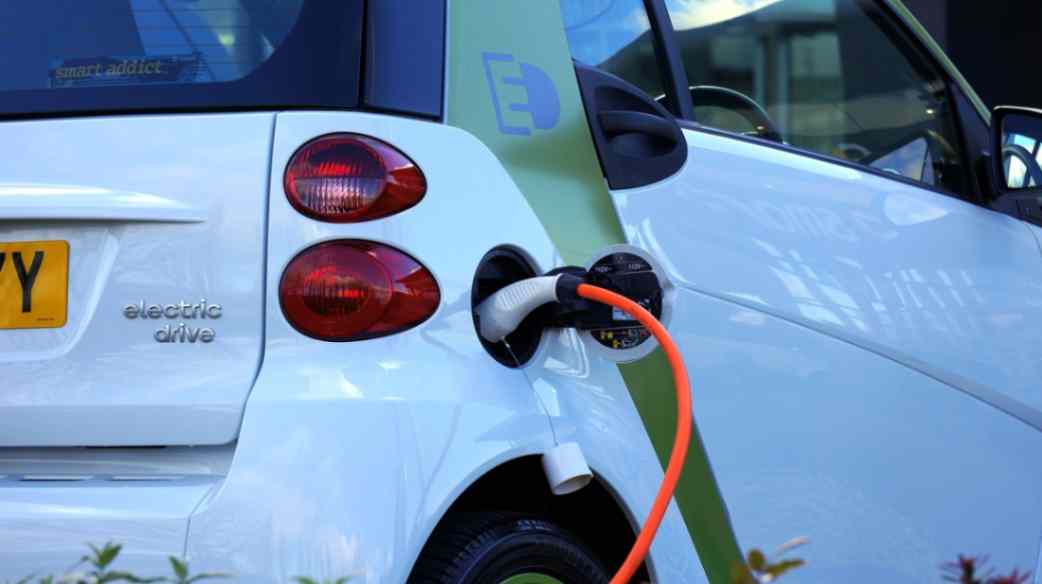
Variations in country-to-country deployment creates disparities in energy transition progress. For instance, the 2022 Inflation Reduction Act in the US has posed challenges for the rest of the world, by potentially channeling energy transition investment away from other markets and into the US. This highlights the need for a globally unified approach to energy policy that balances various national interests while addressing a global problem.
To facilitate the energy transition, it is imperative to establish stable, cohesive, and forward-looking policies that align with global goals and standards. By harmonizing international standards, and providing clear and consistent signals, governments and policymakers can generate investor confidence, helping to foster a robust energy ecosystem that propels the sector forward.
Furthermore, substantive and far-reaching discussions at international events like the United Nations Conference of the Parties (COP), are essential to facilitate this global alignment. These events provide an opportunity to de-risk the energy transition through consistent policy that enables countries to work together, ensuring that the global community can tackle the challenges and opportunities of the energy transition as a united front.
Keeping net-zero ambitions on track
Despite the challenges faced by the energy sector, the latest research reveals a key positive: 91 percent of energy leaders surveyed are working towards achieving net zero. This demonstrates a strong commitment to the transition and clear recognition of its importance. It also emphasizes the need to accelerate our efforts, streamline processes, and reduce barriers to realizing net-zero ambitions — and further underscores the need to de-risk energy transition investment by removing uncertainties.
The solution is collaborating and harmonizing our goals with the main players in the energy sector across the private and public sectors, while establishing consistent, transparent, and supportive policy frameworks that encourage investment and drive technological innovation.
These tasks, while daunting, are achievable. They require vision, leadership, and action from all stakeholders involved. By adopting a new mindset about how we participate in the energy system and what our obligations are, we can stimulate the rapid progress needed on the road to net zero.
Dr. Tej Gidda (Ph.D., M.Sc., BSc Eng) is an educator and engineer with over 20 years of experience in the energy and environmental fields. As GHD Global Leader – Future Energy, Tej is passionate about moving society along the path towards a future of secure, reliable, and affordable low-carbon energy. His focus is on helping public and private sector clients set and deliver on decarbonization goals in order to achieve long-lasting positive change for customers, communities, and the climate. Tej enjoys fostering the next generation of clean energy champions as an Adjunct Professor at the University of Waterloo Department of Civil and Environmental Engineering.
GHD | www.ghd.com
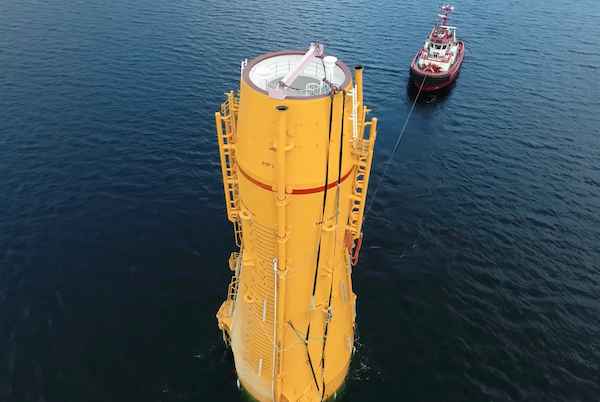
The Kincardine floating wind farm, located off the east coast of Scotland, was a landmark development: the first commercial-scale project of its kind in the UK sector. Therefore, it has been closely watched by the industry throughout its installation. With two of the turbines now having gone through heavy maintenance, it has also provided valuable lessons into the O&M processes of floating wind projects.
In late May, the second floating wind turbine from the five-turbine development arrived in the port of Massvlakte, Rotterdam, for maintenance. An Anchor Handling Tug Supply (AHTS)
vessel was used to deliver the KIN-02 turbine two weeks after a Platform Supply Vessel (PSV) and AHTS had worked to disconnect the turbine from the wind farm site. The towing vessel became the third vessel used in the operation.
This is not the first turbine disconnected from the site and towed for maintenance. In the summer of 2022, KIN-03 became the world’s first-ever floating wind turbine that required heavy maintenance (i.e. being disconnected and towed for repair). It was also towed from Scotland to Massvlakte.
Each of these operations has provided valuable lessons for the ever-watchful industry in how to navigate the complexities of heavy maintenance in floating wind as the market segment grows.

The heavy maintenance process
When one of Kincardine’s five floating 9.5 MW turbines (KIN-03) suffered a technical failure in May 2022, a major technical component needed to be replaced. The heavy maintenance strategy selected by the developer and the offshore contractors consisted in disconnecting and towing the turbine and its floater to Rotterdam for maintenance, followed by a return tow and re-connection. All of the infrastructure, such as crane and tower access, remained at the quay following the construction phase. (Note, the following analysis only covers KIN-03, as details of the second turbine operation are not yet available).
Comparing the net vessel days for both the maintenance and the installation campaigns at this project highlights how using a dedicated marine spread can positively impact operations.
For this first-ever operation, a total of 17.2 net vessel days were required during turbine reconnection—only a slight increase on the 14.6 net vessel days that were required for the first hook-up operation performed during the initial installation in 2021. However, it exceeds the average of eight net vessel days during installation. The marine spread used in the heavy maintenance operation differed from that used during installation. Due to this, it did not benefit from the learning curve and experience gained throughout the initial installation, which ultimately led to the lower average vessel days.
The array cable re-connection operation encountered a similar effect. The process was performed by one AHTS that spent 10 net vessel days on the operation. This compares to the installation campaign, where the array cable second-end pull-in lasted a maximum of 23.7 hours using a cable layer.
Overall, the turbine shutdown duration can be broken up as 14 days at the quay for maintenance, 52 days from turbine disconnection to turbine reconnection, and 94 days from disconnection to the end of post-reconnection activities.
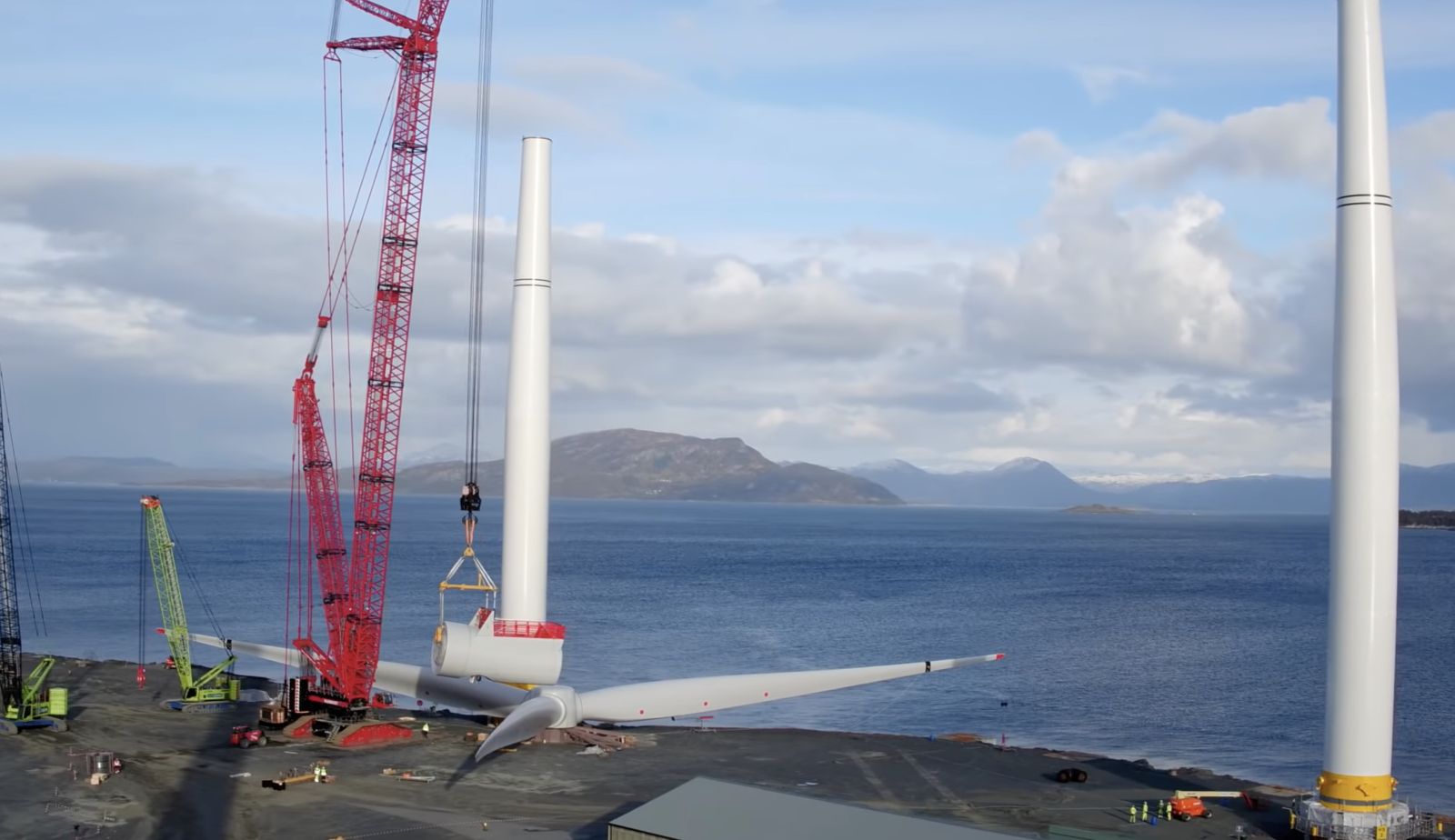
What developers should keep in mind for heavy maintenance operations
This analysis has uncovered two main lessons developers should consider when planning a floating wind project: the need to identify an appropriate O&M port, and to guarantee that a secure fleet is available.
Floating wind O&M operations require a port with both sufficient room and a deep-water quay. The port must also be equipped with a heavy crane with sufficient tip height to accommodate large floaters and reach turbine elevation. Distance to the wind farm should also be taken into account, as shorter distances will reduce towing time and, therefore, minimize transit and non-productive turbine time.
During the heavy maintenance period for KIN-03 and KIN-02, the selected quay (which had also been utilized in the initial installation phase of the wind farm project), was already busy as a marshalling area for other North Sea projects. This complicated the schedule significantly, as the availability of the quay and its facilities had to be navigated alongside these other projects. This highlights the importance of abundant quay availability both for installation (long-term planning) and maintenance that may be needed on short notice.
At the time of the first turbine’s maintenance program (June 2022), the North Sea AHTS market was in an exceptional situation: the largest bollard pull AHTS units contracted at over $200,000 a day, the highest rate in over a decade.
During this time, the spot market was close to selling out due to medium-term commitments, alongside the demand for high bollard pull vessels for the installation phase at a Norwegian floating wind farm project. The Norwegian project required the use of four AHTS above a 200t bollard pull. With spot rates ranging from $63,000 to $210,000 for the vessels contracted for Kincardine’s maintenance, the total cost of the marine spread used in the first repair campaign was more than $4 million.
Developers should therefore consider the need to structure maintenance contracts with AHTS companies, either through frame agreements or long-term charters, to decrease their exposure to spot market day rates as the market tightens in the future.

While these lessons are relevant for floating wind developers now, new players are looking towards alternative heavy O&M maintenance options for the future. Two crane concepts are especially relevant in this instance. The first method is for a crane to be included in the turbine nacelle to be able to directly lift the component which requires repair from the floater, as is currently seen on onshore turbines. This method is already employed in onshore turbines and could be applicable for offshore. The second method is self-elevating cranes with several such solutions already in development.
The heavy maintenance operations conducted on floating turbines at the Kincardine wind farm have provided invaluable insights for industry players, especially developers. The complex process of disconnecting and towing turbines for repairs highlights the need for meticulous planning and exploration of alternative maintenance strategies, some of which are already in the pipeline. As the industry evolves, careful consideration of ports, and securing fleet contracts, will be crucial in driving efficient and cost-effective O&M practices for the floating wind market.
Sarah McLean is Market Research Analyst at Spinergie, a maritime technology company specializing in emission, vessel performance, and operation optimization.
Spinergie | www.spinergie.com
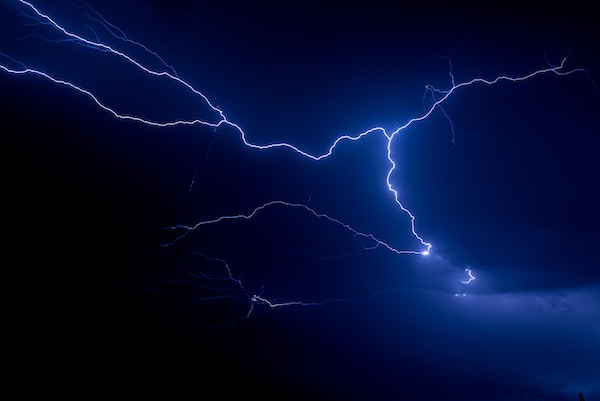
According to the Energy Information Administration (EIA), developers plan to add 54.5 gigawatts (GW) of new utility-scale electric generating capacity to the U.S. power grid in 2023. More than half of this capacity will be solar. Wind power and battery storage are expected to account for roughly 11 percent and 17 percent, respectively.
A large percentage of new installations are being developed in areas that are prone to extreme weather events and natural disasters (e.g., Texas and California), including high wind, tornadoes, hail, flooding, earthquakes, wildfires, etc. With the frequency and severity of many of these events increasing, project developers, asset owners, and tax equity partners are under growing pressure to better understand and mitigate risk.
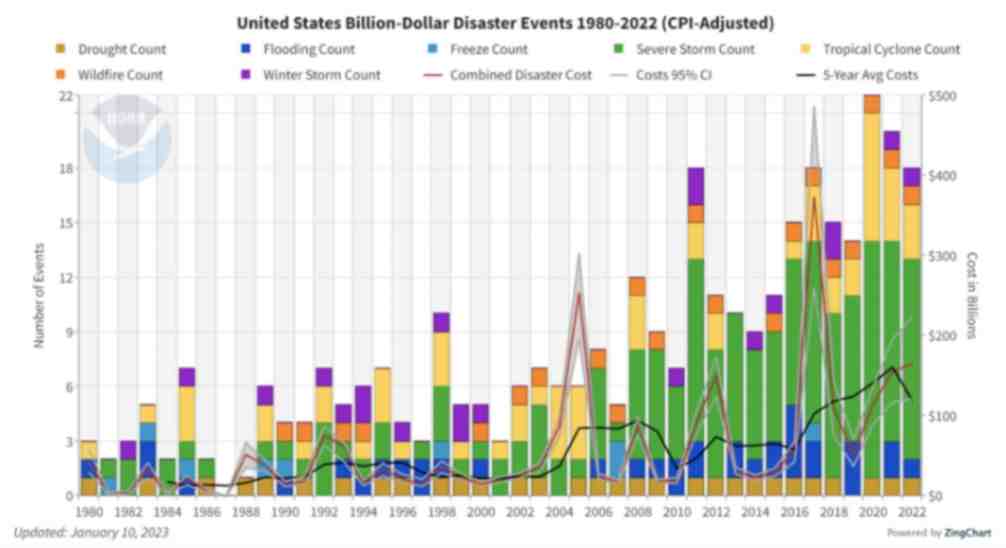
Figure 1. The history of billion-dollar disasters in the United States each year from 1980 to 2022 (source: NOAA)
In terms of loss prevention, a Catastrophe (CAT) Modeling Study is the first step to understanding the exposure and potential financial loss from natural hazards or extreme weather events. CAT studies form the foundation for wider risk management strategies, and have significant implications for insurance costs and coverage.
Despite their importance, developers often view these studies as little more than a formality required for project financing. As a result, they are often conducted late in the development cycle, typically after a site has been selected. However, a strong case can be made for engaging early with an independent third party to perform a more rigorous site-specific technical assessment. Doing so can provide several advantages over traditional assessments conducted by insurance brokerage affiliates, who may not possess the specialty expertise or technical understanding needed to properly apply models or interpret the results they generate. One notable advantage of early-stage catastrophe studies is to help ensure that the range of insurance costs, which can vary from year to year with market forces, are adequately incorporated into the project financial projections.
The evolving threat of natural disasters
Over the past decade, the financial impact of natural hazard events globally has been almost three trillion dollars. In the U.S. alone, the 10-year average annual cost of natural disaster events exceeding $1 billion increased more than fourfold between the 1980s ($18.4 billion) and the 2010s ($84.5 billion).

Investors, insurers, and financiers of renewable projects have taken notice of this trend, and are subsequently adapting their behavior and standards accordingly. In the solar market, for example, insurance premiums increased roughly four-fold from 2019 to 2021. The impetus for this increase can largely be traced back to a severe storm in Texas in 2019, which resulted in an $80 million loss on 13,000 solar panels that were damaged by hail.
The event awakened the industry to the hazards severe storms present, particularly when it comes to large-scale solar arrays. Since then, the impact of convective weather on existing and planned installations has been more thoroughly evaluated during the underwriting process. However, far less attention has been given to the potential for other natural disasters; events like floods and earthquakes have not yet resulted in large losses and/or claims on renewable projects (including wind farms). The extraordinary and widespread effect of the recent Canadian wildfires may alter this behavior moving forward.
A thorough assessment, starting with a CAT study, is key to quantifying the probability of their occurrence — and estimating potential losses — so that appropriate measures can be taken to mitigate risk.
All models are not created equal
Industrywide, certain misconceptions persist around the use of CAT models to estimate losses from an extreme weather event or natural disaster.
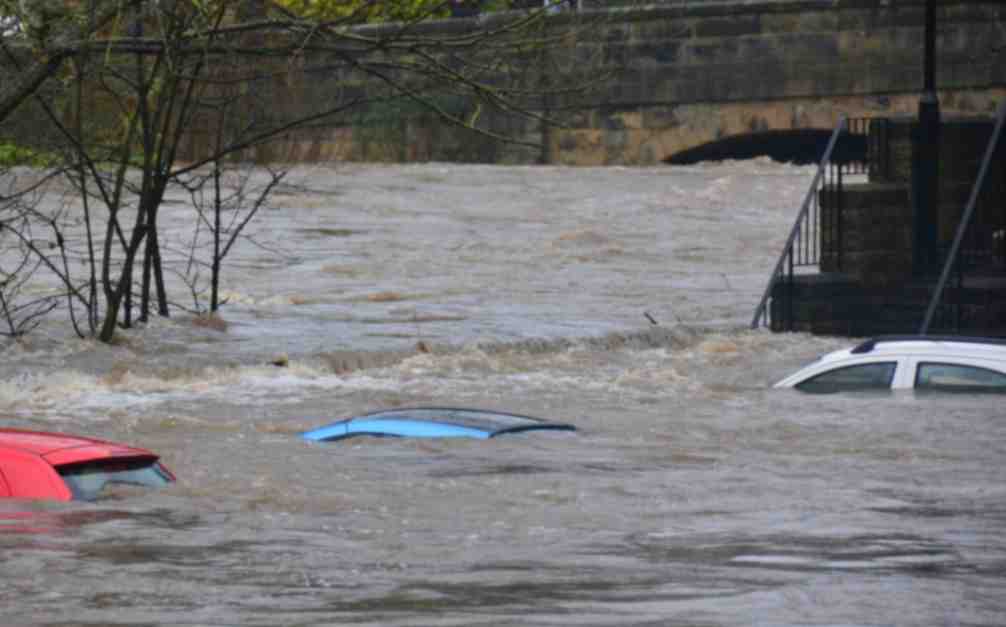
Often, the perception is that risk assessors only need a handful of model inputs to arrive at an accurate figure, with the geographic location being the most important variable. While it’s true that many practitioners running models will pre-specify certain project characteristics regardless of the asset’s design (for example, the use of steel moment frames without trackers for all solar arrays in a given region or state), failure to account for even minor details can lead to loss estimates that are off by multiple orders of magnitude.
The evaluation process has recently become even more complex with the addition of battery energy storage. Relative to standalone solar and wind farms, very little real-world experience and data on the impact of extreme weather events has been accrued on these large-scale storage installations. Such projects require an even greater level of granularity to help ensure that all risks are identified and addressed.
Even when the most advanced modeling software tools are used (which allow for thousands of lines of inputs), there is still a great deal that is subject to interpretation. If the practitioner does not possess the expertise or technical ability needed to understand the model, the margin for error can increase substantially. Ultimately, this can lead to overpaying for insurance. Worse, you may end up with a policy with insufficient coverage. In both cases, the profitability of the asset is impacted.
Supplementing CAT studies
In certain instances, it may be necessary to supplement CAT models with an even more detailed analysis of the individual property, equipment, policies, and procedures. In this way, an unbundled risk assessment can be developed that is tailored to the project. Supplemental information (site-specific wind speed studies and hydrological studies, structural assessment, flood maps, etc.) can be considered to adjust vulnerability models.
This provides an added layer of assurance that goes beyond the pre-defined asset descriptions in the software used by traditional studies or assessments. By leveraging expert elicitations, onsite investigations, and rigorous engineering-based methods, it is possible to discretely evaluate asset-specific components as part of the typical financial loss estimate study: this includes Normal Expected Loss (NEL), also known as Scenario Expected Loss (SEL); Probable Maximum Loss (PML), also known as Scenario Upper Loss (SUL); and Probabilistic Loss (PL).
Understanding the specific vulnerabilities and consequences can afford project stakeholders unique insights into quantifying and prioritizing risks, as well as identifying proper mitigation recommendations.
Every project is unique
The increasing frequency and severity of natural disasters and extreme weather events globally is placing an added burden on the renewable industry, especially when it comes to project risk assessment and mitigation. Insurers have signaled that insurance may no longer be the main basis for transferring risk; traditional risk management, as well as site and technology selection, must be considered by developers, purchasers, and financiers.
As one of the first steps in understanding exposure and the potential capital loss from a given event, CAT studies are becoming an increasingly important piece of the risk management puzzle. Developers should treat them as such by engaging early in the project lifecycle with an independent third-party practitioner with the specialty knowledge, tools, and expertise to properly interpret models and quantify risk.
Hazards and potential losses can vary significantly depending on the project design and the specific location. Every asset should be evaluated rigorously and thoroughly to minimize the margin for error, and maximize profitability over its life.
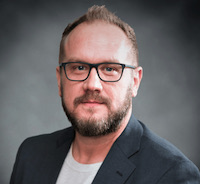 Chris LeBoeuf is Global Head of the Extreme Loads and Structural Risk division of ABS Group, based in San Antonio, Texas. He leads a team of more than 60 engineers and scientists in the US, UK, and Singapore, specializing in management of risks to structures and equipment related to extreme loading events, including wind, flood, seismic and blast. Chris has more than 20 years of professional experience as an engineering consultant, and is a recognized expert in the study of blast effects and blast analysis, as well as design of buildings. He holds a Bachelor of Science in Civil Engineering from The University of Texas at San Antonio, and is a registered Professional Engineer in 12 states.
Chris LeBoeuf is Global Head of the Extreme Loads and Structural Risk division of ABS Group, based in San Antonio, Texas. He leads a team of more than 60 engineers and scientists in the US, UK, and Singapore, specializing in management of risks to structures and equipment related to extreme loading events, including wind, flood, seismic and blast. Chris has more than 20 years of professional experience as an engineering consultant, and is a recognized expert in the study of blast effects and blast analysis, as well as design of buildings. He holds a Bachelor of Science in Civil Engineering from The University of Texas at San Antonio, and is a registered Professional Engineer in 12 states.
ABS Group | www.abs-group.com
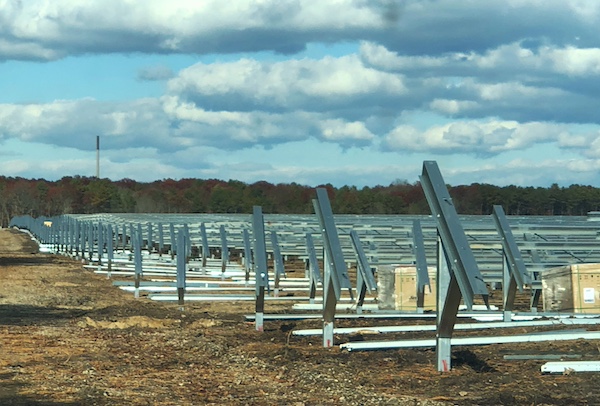
Throughout my life and career as a real estate developer in New York City, I’ve had many successes. In what is clearly one of my most unusual development projects in a long career filled with them, I initiated the building of a solar farm to help t....
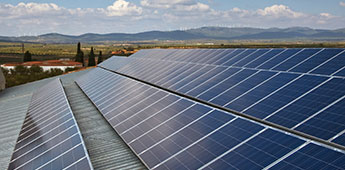
I’m just going to say it, BIPV is dumb. Hear me out…. Solar is the most affordable form of energy that has ever existed on the planet, but only because the industry has been working towards it for the past 15 years. Governments,....
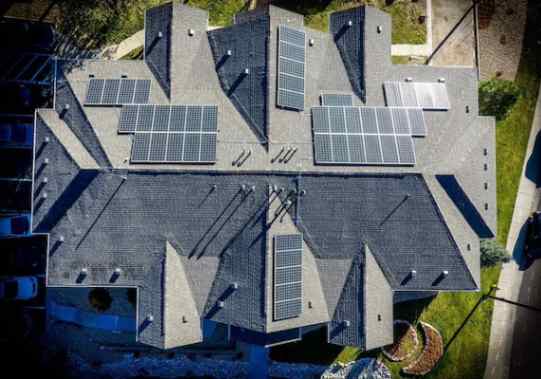
Heat waves encircled much of the earth last year, pushing temperatures to their highest in recorded history. The water around Florida was “hot-tub hot” — topping 101° and bleaching and killing coral in waters around the peninsula. Phoenix had ....
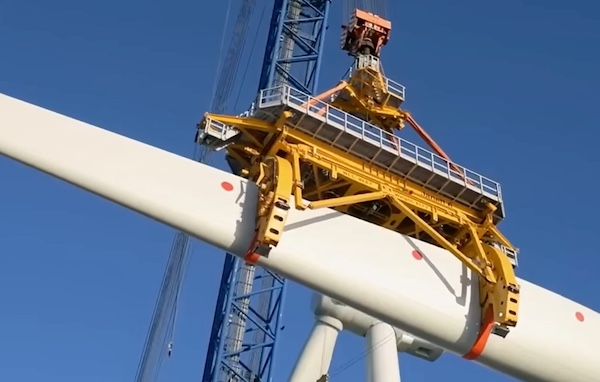
Wind turbines play a pivotal role in the global transition to sustainable energy sources. However, the harsh environmental conditions in which wind turbines operate, such as extreme temperatures, high humidity, and exposure to various contaminants, p....
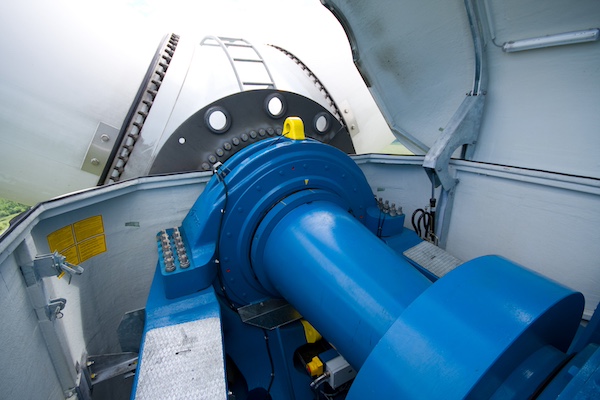
Wind energy remains the leading non-hydro renewable technology, and one of the fastest-growing of all power generation technologies. The key to making wind even more competitive is maximizing energy production and efficiently maintaining the assets. ....
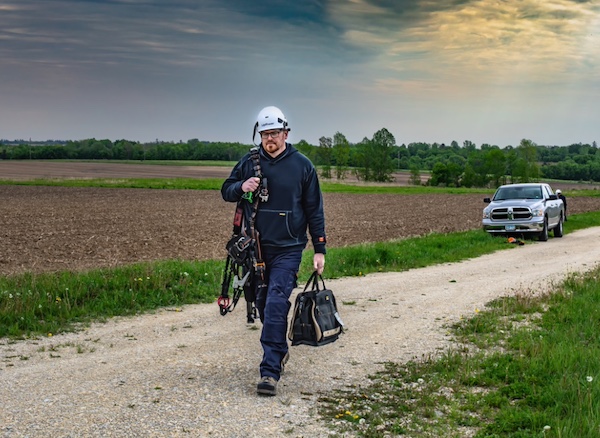
The allure of wind turbines is undeniable. For those fortunate enough to visit these engineering marvels, it’s an experience filled with awe and learning. However, the magnificence of these structures comes with inherent risks, making safety an abs....
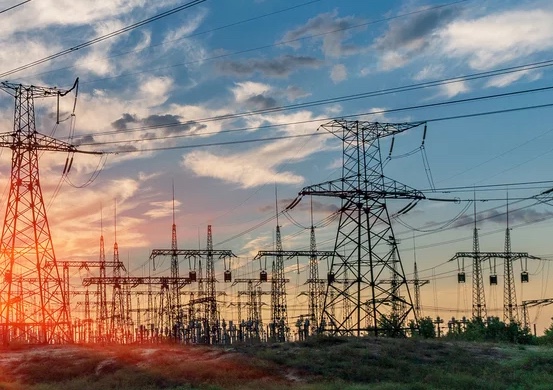
Battery energy storage is a critical technology to reducing our dependence on fossil fuels and build a low carbon future. Renewable energy generation is fundamentally different from traditional fossil fuel energy generation in that energy cannot be p....
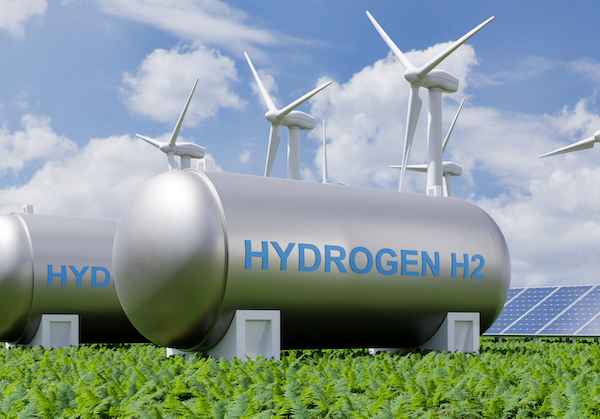
Not enough people know that hydrogen fuel cells are a zero-emission energy technology. Even fewer know water vapor's outsized role in electrochemical processes and reactions. Producing electricity through a clean electrochemical process with water....

In the ever-evolving landscape of sustainable transportation, a ground-breaking shift is here: 2024 ushers in a revolutionary change in Electric Vehicle (EV) tax credits in the United States. Under the Inflation Reduction Act (IRA), a transforma....

Now more than ever, it would be difficult to overstate the importance of the renewable energy industry. Indeed, it seems that few other industries depend as heavily on constant and rapid innovation. This industry, however, is somewhat unique in its e....

University of Toronto’s latest student residence welcomes the future of living with spaces that are warmed by laptops and shower water. In September 2023, one of North America’s largest residential passive homes, Harmony Commons, located....
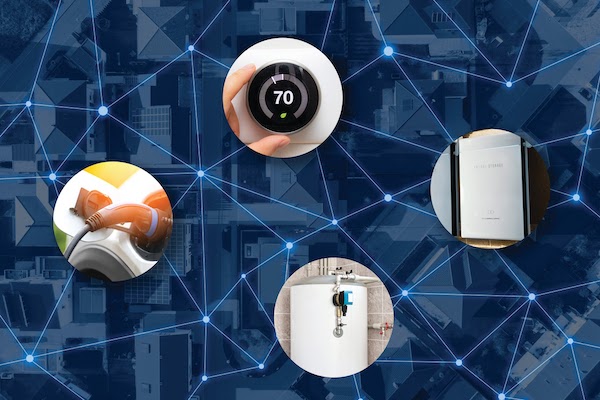
For decades, demand response (DR) has proven a tried-and-true conservation tactic to mitigate energy usage during peak demand hours. Historically, those peak demand hours were relatively predictable, with increases in demand paralleling commuter and ....